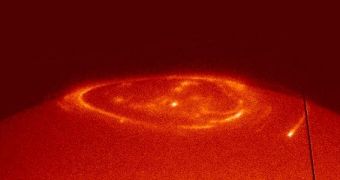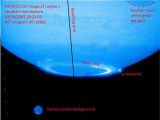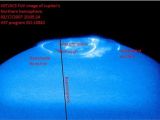Jupiter's peculiar auroras have been a subject of fascination for astronomers for a long time, mostly because they change their patterns and brightness very quickly, much more so than their counterparts on Earth, for example. A thorough study of the events in the planet's magnetic lines, which dictate the strength and intensity of these phenomena, has revealed a significant influence coming from two of the gas giant's moons, Io and Ganymede, AlphaGalileo reports.
“Each of these auroral structures is telling an ongoing story about vast transfers of energy taking place far away from the planet. By analyzing the exact locations of these features and how their shape and brightness changes as Io and Ganymede move in their orbit around Jupiter, we have created the most detailed picture to date of how Jupiter and these moons are electromagnetically interconnected,” Dr. Denis Grodent explained. He will be presenting the finds today at the European Planetary Science Congress, held in Potsdam, Germany.
The orbits of Ganymede and Io, the expert also revealed, went through regions filled with plasma, and these interactions generated strong, electromagnetic waves, which were then projected along Jupiter’s magnetic field lines to the gas giant's poles. The conclusion came from a team of experts at the University of Liege, in Belgium, which Grodent led. The investigators looked at thousands of UV pictures of the auroras, taken with the famous Hubble Space Telescope.
In their research, the experts discovered unexpected brightness variations in the magnetosphere footprint that Ganymede left on Jupiter. Three different timescales, of 100 seconds, of ten to 40 minutes, and of five hours, were identified. “Each of these timescales appears to refer to a specific aspect of the Ganymede-Jupiter interaction and allows us to identify possible actors of this interaction,” Grodent said.
“The 5 hour variation appears to be linked to the rotational period of Jupiter’s magnetic field and the movement of Ganymede through the tilted plasma sheet that surrounds the planet. The 10-40 minute variations could be due to sudden changes in energy due to plasma being injected into the system and the 100 second pulses may be linked to bursts of magnetic energy being suddenly released when Jupiter and Ganymede’s magnetic field lines connect. However, we are not sure at this stage,” he added.

 14 DAY TRIAL //
14 DAY TRIAL // 

